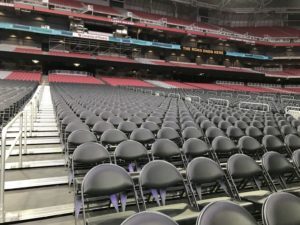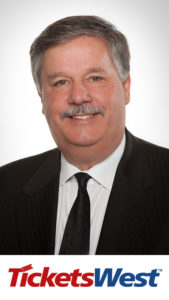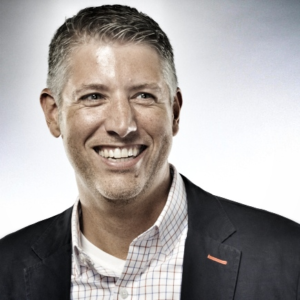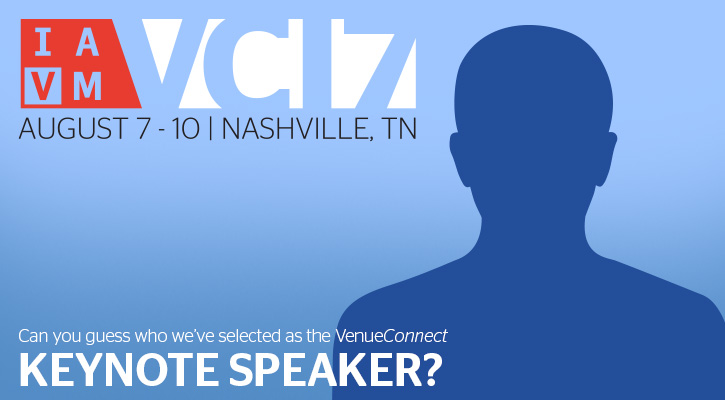A Grand Transformation: 2017 NCAA Men’s Final Four
By Chelsea Johnson
The University of Phoenix Stadium is unlike any other stadium in the country. With its retractable roof and field, and critically acclaimed space design, the venue is sure to be a perfect match for this year’s 2017 NCAA Men’s Final Four Tournament.
Located in Glendale, Arizona, the stadium has been transformed into a fully functional basketball arena for the tournament  that will start on Saturday, April 1. Designed to be a multi-purpose facility, the University of Phoenix Stadium has certainly held its own when it comes to versatility in sports – but it has never hosted a basketball event of this size or configuration before. To assist in the conversion from a football stadium to a basketball arena for this anticipated event, Staging Concepts helped supply equipment along with the Colonnade Group and other partners.
that will start on Saturday, April 1. Designed to be a multi-purpose facility, the University of Phoenix Stadium has certainly held its own when it comes to versatility in sports – but it has never hosted a basketball event of this size or configuration before. To assist in the conversion from a football stadium to a basketball arena for this anticipated event, Staging Concepts helped supply equipment along with the Colonnade Group and other partners.
Since 2008, Staging Concepts has helped the NCAA transform these spaces by customizing a seating riser and supports for each venue, which maximizes sight lines and creates a world-class fan experience. Around 5,200 seats were removed to allow for additional temporary seating to be built for the game. This year, Staging Concepts provided almost 5,000 platforms which allowed temporary seating to be built for almost 17,000 patrons. Additionally, Staging Concepts provides over 1,000 SC9600 Frames and supports that support the risen floor, allowing better sight lines and an overall excellent viewing experience for the audience. Guardrail, aisle rail, step units, frames and accessories accompany the platforms to create a reliable and impressive riser system.
 Staging Concepts was thrilled to return to the Final Four Tournament again this year to continue providing customized systems to enhance the experience for each venue. Check out upcoming tournaments below where you will see our equipment again!
Staging Concepts was thrilled to return to the Final Four Tournament again this year to continue providing customized systems to enhance the experience for each venue. Check out upcoming tournaments below where you will see our equipment again!
Alamodome-San Antonio, TX- 2018
US Bank Stadium- Minneapolis, MN – 2019
Mercedes-Benz Stadium- Atlanta, GA – 2020
Lucas Oil Stadium- Indianapolis, IN- 2021
Mercedes-Benz Superdome – New Orleans, LA – 2022
Chelsea Johnson is a marketing specialist for Staging Concepts
TicketsWest Promotes Dusty Kurtz To President As Jack Lucas Steps Down
Think TicketsWest and you have to think of Jack Lucas, founder of the Spokane, Washington-based company in 1987. Thirty years later, Lucas said that while his zeal and passion for the business remain, the timing was right to pass the presidential torch to Dusty Kurtz, who assumed leadership of the company on March 26.
“When we started TicketsWest in 1987, we had a goal to be the best ticketing company that we could be,” Lucas wrote in an  email to close industry colleagues. “As I now reflect back on 30 years, and realize the significance of where we started and where we are currently at in our history, I am thankful for the many team members, both current and those in the past, that have helped to make TicketsWest into a national brand, and one of the premiere full service/full enterprise ticketing solutions in the United States.
email to close industry colleagues. “As I now reflect back on 30 years, and realize the significance of where we started and where we are currently at in our history, I am thankful for the many team members, both current and those in the past, that have helped to make TicketsWest into a national brand, and one of the premiere full service/full enterprise ticketing solutions in the United States.
“I am so fortunate that for the past 30 years I have had the great joy of being part of this history. To this day, I still enjoy and look forward to walking through the front door each and every day. I must confess, after 30 years, I still love what I do, and still have a passion for my work.
“But after 30 years, there comes a time when you have to pass the torch on to someone else, and let them lead and create the vision for the next 30 years. I have finally made that decision.”
While announcing the promotion of Kurtz, who had served as the company’s vice president since 2010, Lucas said that he will remain as president of WestCoast Entertainment.
“Dusty has had a great career with TicketsWest and has worked alongside me as my vice president for the past several years,” Lucas said. “I can state without reservation that Dusty is ready to take TicketsWest to the next level. Dusty is ready to create the vision and the strategy to position TicketsWest for the future. There isn’t anyone that I would want to have lead TicketsWest than Dusty Kurtz. He is honest, forthright, a hard worker, and provides all of the skills and experience needed to lead TicketsWest.”
Lucas said that he looks forward to devoting more time to WestCoast Entertainment and to expand the business into other regions while growing the business into a more recognizable national brand.
Ungerboeck Adds Andy Weiss As Vice President Of Marketing
Event and venue management software leader Ungerboeck announced the addition of Andy Weiss to the company’s executive leadership team. As vice president of marketing, Weiss will lead worldwide brand strategy and demand generation efforts from company headquarters in St. Louis, Missouri.
“We are thrilled to welcome Andy to the Ungerboeck team,” said Ungerboeck CEO Manish Chandak. “His considerable experience in tech marketing strategy and the additional complexities involved with working on a global scale make him a particularly great fit for Ungerboeck at this exciting time in our history.”
Prior to his position at Ungerboeck, Weiss served most recently as the global director of marketing at Apollo Global where he headed an international, data-driven digital marketing team focused on driving scale and operational efficiency for the education network. In addition to the development of a worldwide mobile initiative to make education more accessible to people in developing countries, Weiss also led the expansion of Apollo programs in India and South Africa. Most notably, his tenure at the company saw the transformation of marketing from a cost center to a lead-generating revenue driver.
“I am very excited to join a company like Ungerboeck that understands the value of client-focused development and  innovation,” Weiss said. “I see incredible opportunity for us to really own our role as a visible and vocal leader not just on the St. Louis tech scene but in the events industry as a whole.”
innovation,” Weiss said. “I see incredible opportunity for us to really own our role as a visible and vocal leader not just on the St. Louis tech scene but in the events industry as a whole.”
Weiss holds a Bachelor of Arts in Communications and Theatre from the University of Notre Dame and an MBA from the University of Chicago Booth School of Business. When he is not cheering from the sidelines at sporting events for his son, Joe, and daughter, Ella, he enjoys endurance sports and traveling with his with wife, Beth.
SMG-Managed Blue Water Convention Center Names New General Manager

The SMG-managed Blue Water Convention Center in Port Huron, Michigan, has named Gino Giacumbo its new general manager. With over two decades of experience in sports and venue management, Giacumbo brings a wealth of knowledge with him to his new position in Port Huron. Most recently, Giacumbo served as the general manager at the Birch Run Expo Center in Birch Run, Michigan.
“We are very happy to have Gino join our team,” said Rich MacKeigan, SMG’s regional general manager who has oversight of the Blue Water Convention Center. “The relationships that Gino has built in the area paired with his years of experience will be a great asset for the venue and SMG as well as the community.”
Giacumbo was chosen to fill the position after an expansive nationwide search by SMG and St. Clair County. In addition to his time at the Birch Run Expo Center, Giacumbo worked in Flint, Michigan, as vice president of business operations for Perani Arena and Event Center and Flint General Hockey Club and in Port Huron as vice president and general manager of the Port Huron Beacons.
“I’m excited at the opportunity to be back in Port Huron and am looking forward to collaborating with SMG and this community to carry on forming a creative and productive environment for the region,” Giacumbo said.
Giacumbo graduated Cum Laude from William Paterson University in Wayne, New Jersey, in 1990 and obtained his Juris Doctor from Widener University School of Law in Wilmington, Delaware, in 1994. Before his time with the Port Huron Beacons, Giacumbo spent time in Ann Arbor, Michigan, as the director of corporate sales and marketing for the USA Hockey-National Team Development Program, Elmira, New York, as the vice president and general manager of the Louisville Panthers and Elmira Jackals, and Moline, Illinois, as the general manager of the Quad City Mallards.
Can You Guess Who the VenueConnect 2017 Keynote Is?
We’re giving you a chance to guess who the VenueConnect 2017 Keynote Speaker is before we make the big reveal on Friday, March 31. Each day leading up to the reveal, we will give you one clue to help you identify the speaker, but here’s the catch: you must be registered for VenueConnect to be eligible to win, and so you can receive the final two clues. Our first two clues will be announced on our Facebook and Twitter pages, so be sure to follow us on social media to stay in the loop. The final two clues will be sent by email to those who have already registered for VenueConnect, so REGISTER NOW and take advantage of the early bird rate.
The first two people to correctly guess who the keynote speaker is will receive the grand prize: a meet and greet with said speaker. The next 3 correct guesses will receive a Nashville Swag Bag upon arrival at VenueConnect. Click here to learn more about VenueConnect, or…
By clicking the “GUESS NOW” button, you are agreeing to the rules & regulations that follow.
Do you want to receive a Front Row News weekly digest?
Categories
- Allied (861)
- Architecture (147)
- Arenas (750)
- Career (897)
- Convention Centers (897)
- Education (623)
- Events (1,544)
- Food & Beverage (193)
- Foundation (113)
- Guest Experience (1,497)
- Industry News (2,270)
- Leadership (1,888)
- Marketing (150)
- Membership (2,001)
- Music (213)
- Performing Arts Centers (456)
- Professional Development (409)
- Research (128)
- Safety & Security (442)
- Sports (764)
- Stadiums (611)
- Student (159)
- Technology (516)
- Ticketing (92)
- Touring (82)
- Trends (365)
- Uncategorized (685)
- Universities (218)
- Video (25)
- Young Professional (198)
Twitter Feed
- Twitter feed loading
Recent Posts
- Cobb-Marietta Coliseum & Exhibit Hall Authority Releases 2024 Annual Report
- Hayley Nath Named IAVM’s 2025 Outstanding Volunteer Service Award Winner
- San Diego Convention Center Expands Lactation Support with New Mamava Pods
- Six Named to Omaha Business Hall of Fame, Enshrined in Museum Exhibit
- Welcome to Our Newest Members
Categories
- Allied
- Architecture
- Arenas
- Career
- Convention Centers
- Education
- Events
- Food & Beverage
- Foundation
- Guest Experience
- Industry News
- Leadership
- Marketing
- Membership
- Music
- Performing Arts Centers
- Professional Development
- Research
- Safety & Security
- Sports
- Stadiums
- Student
- Technology
- Ticketing
- Touring
- Trends
- Uncategorized
- Universities
- Video
- Young Professional
Archives
- July 2025
- June 2025
- May 2025
- April 2025
- March 2025
- February 2025
- January 2025
- December 2024
- November 2024
- October 2024
- September 2024
- August 2024
- July 2024
- June 2024
- May 2024
- April 2024
- March 2024
- February 2024
- January 2024
- December 2023
- November 2023
- October 2023
- September 2023
- August 2023
- July 2023
- June 2023
- May 2023
- April 2023
- March 2023
- February 2023
- January 2023
- December 2022
- November 2022
- October 2022
- September 2022
- August 2022
- July 2022
- June 2022
- May 2022
- April 2022
- March 2022
- February 2022
- January 2022
- December 2021
- November 2021
- October 2021
- September 2021
- August 2021
- July 2021
- June 2021
- May 2021
- April 2021
- March 2021
- February 2021
- January 2021
- December 2020
- November 2020
- October 2020
- September 2020
- August 2020
- July 2020
- June 2020
- May 2020
- April 2020
- March 2020
- February 2020
- January 2020
- December 2019
- November 2019
- October 2019
- September 2019
- August 2019
- July 2019
- June 2019
- May 2019
- April 2019
- March 2019
- February 2019
- January 2019
- December 2018
- November 2018
- October 2018
- September 2018
- August 2018
- July 2018
- June 2018
- May 2018
- April 2018
- March 2018
- February 2018
- January 2018
- December 2017
- November 2017
- October 2017
- September 2017
- August 2017
- July 2017
- June 2017
- May 2017
- April 2017
- March 2017
- February 2017
- January 2017
- December 2016
- November 2016
- October 2016
- September 2016
- August 2016
- July 2016
- June 2016
- May 2016
- April 2016
- March 2016
- February 2016
- January 2016
- December 2015
- November 2015
- October 2015
- September 2015
- August 2015
- July 2015
- June 2015
- May 2015
- April 2015
- March 2015
- February 2015
- January 2015
- December 2014
- November 2014
- October 2014
- September 2014
- August 2014
- July 2014
- June 2014
- May 2014
- April 2014
- March 2014
- February 2014
- January 2014
- December 2013
- November 2013
- October 2013
- September 2013
- August 2013
- July 2013
- June 2013
- May 2013
- April 2013
- March 2013
- February 2013
- January 2013
- May 2012
- March 2012
- December 2011
- November 2011
- October 2011
Recent Comments
- Frank Bradshaw, Ph.D., CVE on John Meyer, CVE, a Tireless Advocate of Certification for Venue Professionals, Has Died
- Neil Sulkes on Hilary Hartung, Friend to Many in Venue Marketing, Has Left Us
- Jason Parker, CVE on The Devastation of Hurricane Helene and How We Can Support One Another
- Larry Perkins on Touhey Testifies Against Speculative Ticketing Before Congressional Subcommittee
- Peter Secord on Major Players for Planned Elkhart Amphitheater Were in the Mix at VenueConnect


